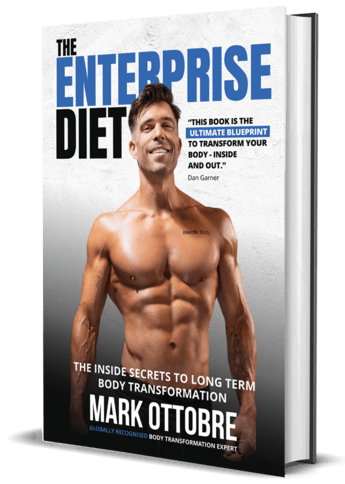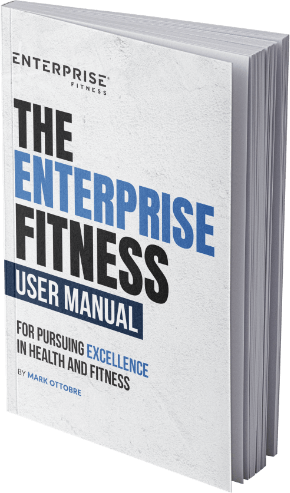How Hydrogenated Oils Harm Your Health
By Mark Ottobre
Hydrogenated and partially hydrogenated oils are insidious. These oils are found in the overwhelming majority of prepackaged and fast foods, have an extended shelf life and are inexpensive to produce. However, despite their rampant use in manufacturing, these oils are harmful to our health.
Examples include; vegetable oils that have been hydrogenated or partially hydrogenated, canola oil, CRISCO oils, soybean oil, shortening and its two head off-spring, Margarine.
But first, to really understand hydrogenated oils, we need to delve into their origin story and look at how chemical advancements shaped fat and cooking.
Prior to 1909, the world had never seen hydrogenated oils. In fact, lard, butter and tallow were all the rage and even used for candles and soaps.
The company that changed all that was Procter & Gamble.
The company, founded in 1837 has quite an enchanting backstory. Two men, William Procter and James Gamble, met serendipitously by marrying sisters. Procter, an established candle maker and Gamble, a soap maker found themselves competing for the same raw materials.
Father-in-law Alex Norris saw the opportunity in his two sons-in-laws needing the same raw materials and suggested a joint venture. With a total asset pool of $7,192.24, off they went together into business. (Note: $7,192.24 is around $170,000 in 2020).
Meanwhile, in the scientific world, chemist Paul Sabatier developed the hydrogenation process, and in 1901, with the contribution of scientist Wilhelm Normann, the procedure could make liquid fat solid at room temperature.
The hydrogenation process remained unbeknown to Procter & Gamble until 1907 when Edwin Kayser, a chemist for the company that owned the rights to the process of hydrogenating oil approach the duo with a revolutionary idea… Why not use hydrogenated oils to make candles and soaps?
What they created was the equivalent of turning fat into gold; by 1908, P&G owned eight cottonseed mills where they extracted fat on-demand and turned it into soaps and candles.
But the business wasn’t all sunshine and roses despite stumbling on fatty alchemy. After P&G invested heavily into hydrogenation there was a potential business threat looming in plain sight, the light bulb becoming an affordable commodity. Even though it would be a few years until the whole country would embrace the light switch, candle sales were already plummeting. The duo knew that if they wanted to thrive, they needed to do something outlandish. They needed to enter the kitchen.
And in 1911, now a house-hold name, CRISCO made its debut selling 2.5 million pounds within 12 months. By 1916 they had reached sixty million.
So how did Procter & Gamble turn cottonseed oil, previously considered agriculture waste, into CRISCO, a product passionately loved and considered healthy?
It was a mixture of good timing, great marketing and numerous endorsements by sponsored and mislead governing bodies.
From what I can tell, neither Procter and Gamble, nor the scientists and chemists involved initially in the development and distribution of hydrogenated oils had prior knowledge that the oils would be detrimental to our health. That understanding came much later and continues on today.
Why Eliminate Hydrogenated oils and Margarine
The first thing you should know is there’s a difference between hydrogenated and partially hydrogenated. Understanding this is important as these terms should not be used interchangeably.
The two main problems with both are:
- Trans fats (TFAs)
- Omega 6
Partially hydrogenated oils are on everyone’s hit list to eliminate. Even the most conservative governing bodies have issued strong statements. In 2015 the American Food and Drug Administration (FDA) determined that ‘partially hydrogenated oils’ are no longer recognised as safe. More notably, New York City issued a complete ban on all foods containing and manufactured with partially hydrogenated oils.
The reason for such a strong stance against partially hydrogenated oils is because they contain trans fats whereas fully or ‘complete’ hydrogenated oils do not (or at least theoretically contains far less trans fat than partial hydrogenation). Trans fats have been empirically linked to cardiovascular disease. They have also been declassified on the GRAS (Generally recognised as safe) list by the FDA; not safe for human consumption.
Food Standards Australia and New Zealand (FSANZ) are a little laxer on the issue, recognising that trans fats are an issue for our health, however; they concluded that “Australians obtain on average 0.5 per cent of their daily energy intake from TFAs and New Zealanders on average 0.6 per cent. This is well below the WHO recommendation of no more than 1 per cent. It is also below the levels in many other countries.”
More importantly, manufacturers within Australia and New Zealand are not required to declare TFAs on the label, however, they may do so voluntarily. The only exception to this is when manufacturers make nutritional claims about cholesterol, saturated fat, trans, polyunsaturated, monounsaturated, omega 3, 6 or 9 fatty acids.
In America, the FDA’s rules on labelling trans fats states: “Trans fat content must be expressed as grams per serving to the nearest 0.5-gram increment below 5 grams and to the nearest gram above 5 grams. If a serving contains less than 0.5 gram, the content, when declared, must be expressed as “0 g.”
Table outlining trans fat percentages:
| OIL | Trans Content (%) |
| Soybean | 0.4 – 2.1% |
| Walnut | 2.0 – 3.9% |
| Sunflower | 1.1% |
| Canola* | 1.9 – 3.6% |
| Olive | 0.5% |
| PH Soybean oil** | 43.6 – 50.2% |
*Results of multiple samples of commercial oil **Partially hydrogenated soybean oils for comparison Reference: Harvard Health
So what does this mean?
If a food has less than 0.5 grams of trans fat per recommend serve, trans fat can be labelled at 0 or even make claims such as ‘trans fat-free’. The problem with that is; very few people ever adhere to a recommend serve, particularly when the oils are being used in cooking or in a deep frier. Additionally, high heats is what creates trans fats, so as soon as that oil hits the frier, you can bet you’re eating more TFAs than you bargained for.
If it’s one thing that everyone in nutrition agrees on, it’s that trans fats are bad for you.
Now before someone gets their knickers in a knot and points out that trans fats are found in some meats and dairy products, they are found in very low amounts and have not shown to present the same issues as their chemical alternatives. The reason why trans fat is such an issue in vegetable oils and margarines is because the hydrogenation process increases the amount of TFAs dramatically and, the oils in of themselves oxidise faster creating more trans fat when exposed to heat.
It’s clear, partial hydrogenation is bad news. But what about fully or complete hydrogenated oils? They present their own unique problems. They often get frowned upon due to the saturated fat content, but it goes far deeper than just saturated fat.
So before we go any further, let’s answer the question…
What is hydrogenation?
Sifting through numerous scientific explanations, most make no sense to the average gym-goer, or enthusiast, I’ll put it in usable terms:
It’s making an unsaturated fat stable; saturating the fatty-acid carbon chain with hydrogen. In simple terms, it’s turning an unsaturated fat into a saturated fat. Saturated fat is far more stable when exposed to heat and comes with a much higher oxidation point. This is why hydrogenated oils are used to extend the shelf life of many processed foods.
Partial hydrogenation is much the same process, however, by only partially hydrogenating, trans fatty acids are left behind. As it relates to the outcome of fats being created; the main difference is partial hydrogenation results in fats being semi-solid at room temperature and full hydrogenation makes oil become solid at room temperature.
The main four advantages of Hydrogenation to food manufactures are:
- It protects against oxidation, thereby prolonging shelf life by making unsaturated fat, saturated.
- It alters the texture of foods by making liquid vegetable oils more solid and spreadable (think margarine).
- It’s dirt cheap.
- It’s stupidly cheap to produce.
So why would anyone buy this?
Consumer benefits were built on misinformation from governing bodies and lies spelt by big food corporations with clever marketing. It was the mislead demonisation of saturated fat that caused unsaturated fat to take favour. So instead of butter and lard, the ‘choice’ alternatives became hydrogenated margarine and vegetable oil. The irony of the situation is that hydrogenation makes an unsaturated fat, saturated, the very kind of fat that governing bodies demonised.
Want to learn more? Check out this podcast.
By Mark Ottobre





